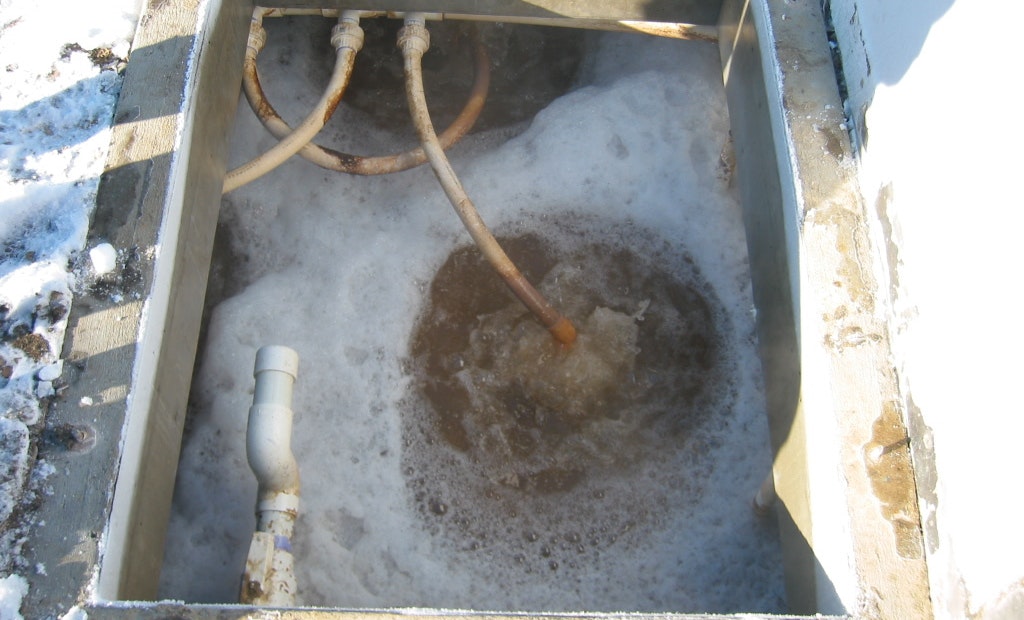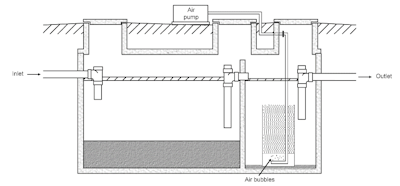
Interested in Education/Training?
Get Education/Training articles, news and videos right in your inbox! Sign up now.
Education/Training + Get AlertsWhen a soil treatment area has been organically and/or hydraulically overloaded it is possible to remediate the STA using an advanced pretreatment unit. When we use a conventional system we are relying on the soil to remove the many remaining solids and organic materials along with bacteria and viruses.
If a unit is installed that will meet secondary treatment levels or better, the effluent will contain few solids and little remaining organic material as measured by the BOD5 test. This additional step reduces the amount of total suspended solids (suspended solids value of less than 30 mg/L, compared to typical septic tank effluent with TSS in the range of 60 to 100 mg/L).
In addition, the effluent reaching the STA will often contain dissolved oxygen, which can assist in the breakdown of organic material that may have built up over time. Many pretreatment units contain time dosing in the treatment train which can provide another opportunity to spread the loading out over time and can improve the performance of the STA.
Many states allow systems that are failing due to clogging biomat be remediated using aerobically treated effluent if the septic system otherwise meets soil and site separation from the high water table or bedrock. The most common treatment units utilized to provide pretreated effluent are aerobic treatment units and media filters. These units utilize the aerobic treatment process which is 10-20 times faster than the anaerobic process in septic tanks.
Converse and Tyler (1994) attempted to remediate 15 biologically clogged systems in Wisconsin through the addition of aerobic treatment units to malfunctioning systems. An aerobic treatment unit (ATU) is typically a proprietary device that uses direct introduction of air into wastewater by mechanical means to maintain aerobic conditions to break down organic matter, reduce pathogens and transform nutrients. They are typically installed following a reduced-sized septic tank, often referred to as a trash trap. In this field evaluation, 12 of the 15 systems were successfully remediated during the study period. Two of the systems were monitored for ponding depths in soil absorption beds for several years; one system was monitored for nearly four years and one for six years. Of the 15 systems, one system was greatly overloaded and two systems had to be periodically pumped.
There have also been manufacturers who have developed ATUs that go directly into the first or second compartment of a septic tank for remediation, sometimes with bioaugmentation. These units may be effective at reducing the organic loading, but care should be taken that the unit does not leave solids or bacteria in the effluent since they typically do not have a clarifier as traditional ATUs do. An effluent screen could assist in this process.
The other common type of pretreatment unit is a media filter. A media filter is a unit which uses materials designed to treat effluent by reducing BOD and/or removing suspended solids in an unsaturated environment through biological treatment via microbial growth on the surface of the media. Many types of media are used including sand, gravel, peat, coco fiber, textile and other synthetic media. Media filters can be operated in single-pass or a recirculating mode where the effluent passes through the filter numerous times.
If you are considering using a pretreatment system to help remediate a failing system be sure to discuss the specifics with your permitting authority and the product manufacturer.
About the Author
Sara Heger, Ph.D., is an engineer, researcher and instructor in the Onsite Sewage Treatment Program in the Water Resources Center at the University of Minnesota. She presents at many local and national training events regarding the design, installation and management of septic systems and related research. Heger is education chair of the Minnesota Onsite Wastewater Association (MOWA) and the National Onsite Wastewater Recycling Association (NOWRA), and serves on the NSF International Committee on Wastewater Treatment Systems. Send her questions about septic system maintenance and operation by email to kim.peterson@colepublishing.com.
This article is part of a series on repair and remediation:
- To Repair Or Not To Repair … That is the Question
- How to Evaluate an Onsite System for Remediation
- Remediation Options: Technology to the Rescue
- Low-Tech Solutions to Extend System Life
- Homeowner Education is Critical During a System Repair
- System Management: The Key to Successful Septic Repair







